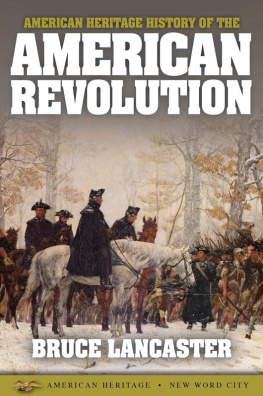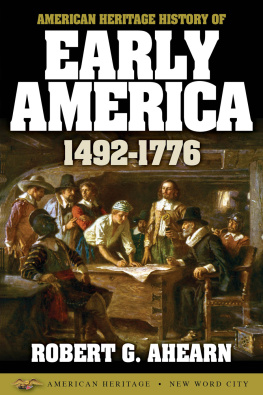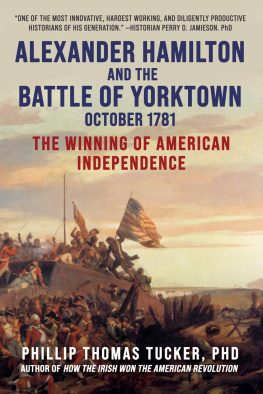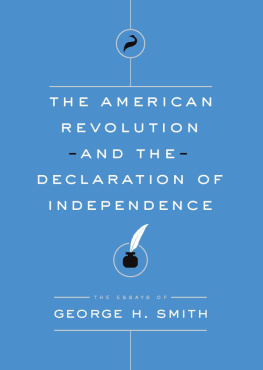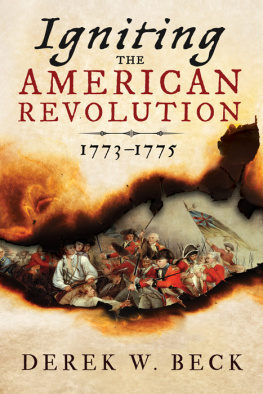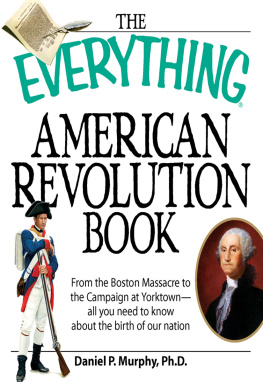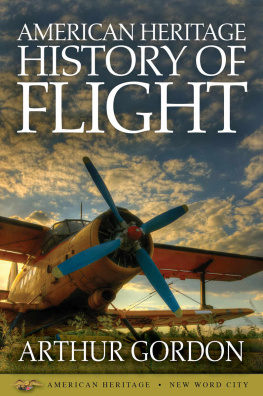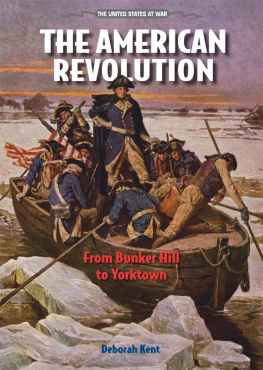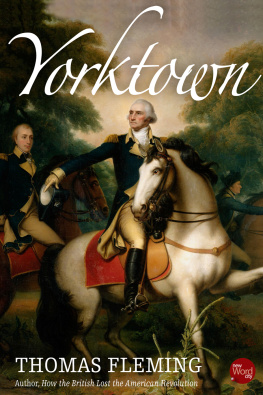We had our American Revolution nearly two centuries ago, and the years have done something to it. The legends remain, and the statues and the grassy earthworks and the great body of tradition, but a good deal of the reality has been filtered out. When we look back we see Washington crossing the Delaware on a cold winter night, or kneeling in prayer in the snow of Valley Forge ; we see the Minuteman , or the lanky Virginia rifleman picturesque in fringed buckskin, but somehow it all seems to be out of a pageant, and neither Washington nor the men who followed him quite come alive for us.
This is a pity, because the central reality in this great act that brought a nation to its birth was the living, aspiring, struggling people who were immediately involved in it. A romantic haze has settled down over the whole affair, and when we look through it the facts tend to be a little blurred. And what is most worth remembering - the thing that so often escapes us - is the fact that, like all of historys wars, the war of the American Revolution was a hard, wearing, bloody, and tragic business - a struggle to the death that we came very close to losing.
It was a struggle, furthermore, that was fought out by people very much like ourselves, which is to say that they were often confused, usually divided in sentiment, and now and then rather badly discouraged about the possible outcome of the tremendous task they had undertaken. It comes as a shock to realize how many Americans in 1775 were actually opposed to independence and a break with King George III . A good many historians believe that no more than a third of the provincials were active patriots, and they estimate that another third were Loyalists, with the remaining third uncommitted. To continue with the arithmetic a little farther, it is clear that a good many of the people who believed in independence were not always eager to fight for it. When the war began the colonies contained about 2.5 million men, women, and children - a population which should have yielded some 700,000 men capable of bearing arms. Yet in 1780, only one year before the crucial battle at Yorktown , the Continental Army and the state militia together contained no more than one-sixteenth of the countrys available manpower.
But all of this says nothing more than that the people of the Revolutionary period were extremely human. Enough of them, in the end, were willing to fight and die for what they believed in to make the dream of independence and freedom come true, and we who look back at them owe them a debt whose size is almost beyond our comprehension. They did not have a very easy time of it, and if they got confused and discouraged now and then it is not to be wondered at.
For behind the great struggle with the professional armies of Great Britain was the unending struggle between patriot and Loyalist, a civil war just as real and as bitter as the one which broke in 1861. And although the principal battles were decided along the eastern seaboard, the fighting on the frontiers, along the rim of American civilization, was, if anything, even more violent, and it continued in many areas long after the peace treaty with England was signed.
Furthermore, although the Revolution was a civil war, it was also, after 1778, something very much like a world war as well. The fighting extended from the West Indies to India, and at times England itself was in as much danger of invasion as in the year of the Spanish Armada.
It sometimes is hard to see how the Americans could have won if the Revolution had not turned into a world war - that is, if France had not intervened in the wake of the surrender of Burgoynes army - and yet there was an unconquerable toughness at the core of the American effort. The farmers and shopkeepers of Massachusetts and Pennsylvania and South Carolina and the other colonies were hard men to beat, and they went quite a way on their own, without any help from anyone but themselves. They knew little about European methods of warfare (and despite all of the tales about frontier riflemen fighting from behind trees, most of the great Revolutionary battles were fought according to the European style) and they were poorly equipped, usually ill-fed, and almost constantly badly clothed; but fighting against the worlds greatest power they managed not only to hold off disaster but usually to give a little better than they got.
Somewhere in the course of more than six bitter years of warfare, those Americans worked something out. They began to see, amidst the monotony and discomfort and acute danger and suffering of constant campaigning, that they were somehow more than just the soldiers of the separate colonies. Somewhere, through their efforts - because of their efforts, because of what they learned while they were making the efforts - a nation was born. As South Carolinas Christopher Gadsden had urged before the fighting even started, they began to see that There ought to be no more New England men, no New Yorkers... but all of us Americans! That came, and finally independence came after it, as it had to come once the vision had truly taken hold.
This book is an attempt to give flesh and blood to the war that gave us our independence, to get back to the reality beneath the legend - not only in words, but also, as far as it is possible, through pictures drawn and painted by men who lived through those times. If it provides a clearer understanding of what was believed and done during the Revolution - if it breathes a little life into the legend of the men who provided us with our freedom - it will have served its purpose.
For the farmers in the valleys, hills, and plains of America and the fishermen scattered down its endless coast, Europe in the eighteenth century had little meaning. Few realized that their lives were tangled in a web of forces - diplomatic, social, and economic - that stretched from London to Moscow, or that their fate might be settled on the plains of India or amidst the isles of the Caribbean. But it was so. For nearly a century, Britain had been locked in a struggle with France; on its outcome the fate of the world depended.
And there were more subtle ties than these. When Benjamin Franklin walked the streets of London and Paris, he saw and heard what was familiar to him in Boston or New York. The same lovely proportions of houses and furniture caught his eye, richer perhaps and more ostentatious in decoration, but recognizably similar. He heard voiced the same discontents and the same aspirations. Frenchmen and Britons talked to him of the tyranny of feudal privilege, of the glories of liberty, of the need for equality. He learned how they, too, felt their lives to be thwarted by kings, nobles, and ancient forms. He came to understand the strength of the age-old institutions governing European society. Above all, he came to know that the fate of America was entwined with Europe and that forces unleashed there would help mold its destiny.
When George III succeeded to the British throne in 1760, the whole nation had become drunk with victory. The previous year - the year of miracles - London church bells had rung out day after day to celebrate fresh triumphs over France. Wolfe had taken Quebec, and French colonies dropped like ripe plums into the hands of marauding English admirals. As the Annual Register for 1759 recorded of Great Britain, In no one year since she was a nation has she been favored with so many successes, both by sea and by land, and in every quarter of the globe. Trade flourished; production soared. War, as William Pitt , Londons hero, had forecast, brought wealth - wealth and empire as vast as his own wild dreams. This lean, hawk-eyed statesman, sick in body and mind, felt called by destiny to lead England to greatness. He believed that France had to be reduced to a second-rate power, Spain despoiled; his hero, Frederick of Prussia, could keep the rest of Europe in proper subjection. Two years later - though Pitt, at odds with his self-willed monarch, had been cast from the ministry - the dream was fulfilled. In America, Canada, the West Indies, Africa, and India, French power had been destroyed. In 1761, the Navy, taking advantage of Spains belated alliance with France, captured Manila, and the next year, Havana. British ships swept the seas, and the world lay at Englands feet.

